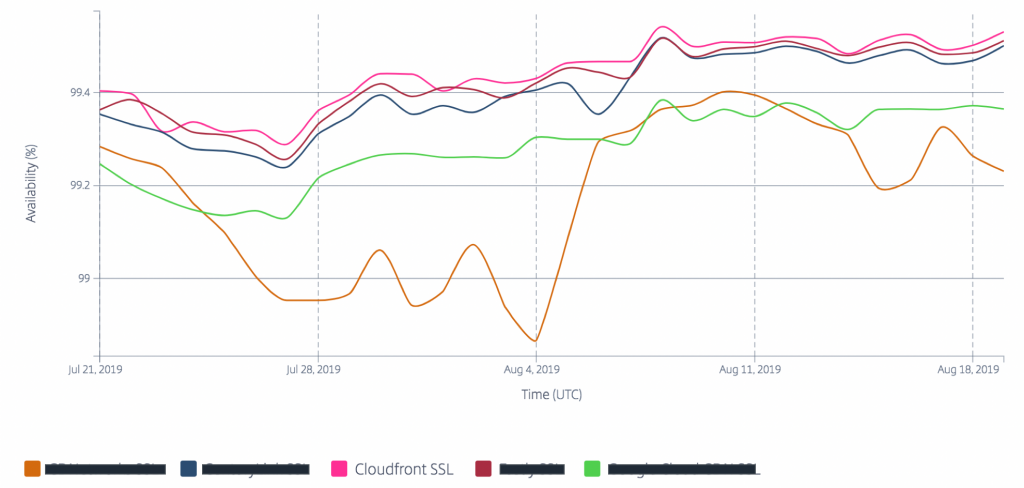Networking & Content Delivery
Tag: CDN
Geo-block Content Using Amazon Location and Edge Services
Organizations require methods to restrict access to content to adhere to compliance and regulatory requirements, sanctions, privacy laws, territorial ownership rights, security controls, etc. One way that companies restrict access is by Geo-blocking – restricting access to a website or another piece of content based on a user’s location. A popular method of geo-blocking content is […]
External Server Authorization with Lambda@Edge
Introduction In this blog post, we will explain how you can use Lambda@Edge to authorize requests to Amazon CloudFront by forwarding authorization data to external authorization servers. We will outline the sequence of requests in such a workflow, the steps for implementation with Node.js sample code, and a CloudFormation template for a simple external test […]
Cost-Optimizing your AWS architectures by utilizing Amazon CloudFront features
Amazon CloudFront is a global content delivery network (CDN) that makes it easy to deliver websites, videos, apps, and APIs securely and at high speeds with low latency. You can use CloudFront to reduce latency by delivering data through 400+ globally dispersed Points of Presence (PoPs) and improve security with traffic encryption, access controls, and […]
How to optimize content for search engines with AWS WAF Bot Control and Amazon CloudFront
Search engine crawlers – a special bot type used to index your site – are very important visitors. They make sure that your content is searchable by end users. If a crawler can’t easily read your content, then any updates you make might not be immediately reflected in the search results. Depending on the algorithms […]
Three advanced design patterns for high available applications using Amazon CloudFront
Any web application using Amazon CloudFront benefits from the inherent high availability of this AWS service. It’s a globally distributed network that is immune to local hardware failures or network congestion. Furthermore, it’s built on top of the AWS global network, which provides better isolation from the public internet. Finally, it’s designed with various advanced […]
CloudFront migration series (Part 1) – introduction
September 8, 2021: Amazon Elasticsearch Service has been renamed to Amazon OpenSearch Service. See details. This is the first post in a blog series about Amazon CloudFront migrations. CloudFront works with other AWS edge networking services, to provide content delivery, perimeter security, end-user routing, and edge compute. CloudFront is a Content Delivery Network (CDN), which […]
Amazon CloudFront Announces Cache and Origin Request Policies
Amazon CloudFront’s new Cache and Origin Request Policies give you more control over the way CloudFront uses request data to influence both the cache key and the request that is forwarded to the origin on a cache miss. This gives you more flexibility while enabling better control and efficiency of the caching that CloudFront performs. […]
Using multiple content delivery networks for video streaming – part 1
Introduction Today, viewing video content is a prevalent form of online activity whether in entertainment, education, marketing, or information. For example, as a Solutions Architect at AWS, I tend to watch hours of video a week to learn about technologies, and I also leverage video content to convey ideas and best practices in a scalable […]
Global Data Ingestion with Amazon CloudFront and Lambda@Edge
Special thanks to Raul Frias for contributing to this blog post Lambda@Edge enables you to run AWS Lambda functions globally so that you can process and respond to user requests at low latencies. Running Lambda functions in close geographical proximity to users helps satisfy a number of use cases, such as website personalization, Search Engine […]
Visitor Prioritization on e-Commerce Websites with CloudFront and Lambda@Edge
For online retailers, the annual holiday season, special sales and new product launches are all exciting events that typically drive a rapid increase in site traffic. With Amazon CloudFront and Lambda@Edge, you can now build a Flash Crowd Management workflow that lets you control what proportion of incoming shopper traffic is allowed to access your backend application, while directing the remaining shoppers to a temporary waiting room- an alternate site where you can provide them a branded experience while they await their turn to access the application.









